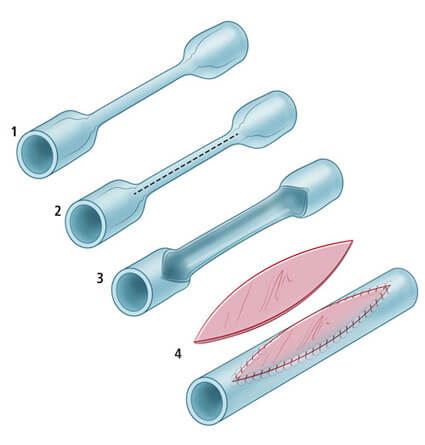Urethral Stricture
Home > Urethral Stricture


This test is easily performed by Urologists as cystoscopy is as basic to General Urology practice as the use of a stethoscope is to a Cardiologist. However, the main limitation with this test is that it is unable to determine the length and exact location of the stricture. That detailed information requires X-ray urethral imaging (called a retrograde urethrogram or RUG, and a voiding cystourethrogram for VCUG). This imaging, to be done properly, requires specific expertise and equipment.


The cutting-edge X-ray imaging at our Center is performed using a specific technique modified by Dr. Gelman. This technology allows us to gently provide high-resolution images that accurately determine the strictures length, location, and severity. The picture on the left shows a cone-shaped adaptor being used to gently form a seal at the opening of the urethra. This plastic adaptor used to be commercially available but was discontinued, so we developed a better surgical grade stainless steel adaptor. This is now commercially available by CS Surgical and called the Gelman adaptor. This specific technique, first used by Dr. Gelman in 1997, is now illustrated in Campbell-Walsh Urology, the major Textbook in Urology. The film on the right is a retrograde urethrogram in a patient with a long urethral stricture. The image clearly documents the limitations of a cystoscope, as it is only able to see a small portion of the stricture. When looking through the small opening, the Urologist would see a wider area just beyond the narrowed urethra and could mistakenly think this was a short urethral stricture. However, as shown, there is additional stricture farther in, and the only way to obtain this detail is by performing urethral imaging. The section on diagnostic evaluation will provide detailed information on how we image the urethra.

Urethral X-ray imaging will reveal either a short or long stricture of the urethra, excluding men who have a severed urethra from a pelvic fracture, which requires a different evaluation. The best choice for treatment will depend on the length of the stricture, as well as if there was any prior treatment. For short strictures with no prior treatment most Urologists may choose to perform a procedure called a direct vision internal urethrotomy or DVIU. A DVIU is a procedure in which the Urologist dilates or cuts open the narrow urethra internally, providing some temporary relief of symptoms but does not offer a long lasting cure, making it an ineffective treatment option. To learn more, read the section on urethral dilation and urethrotomy, which will discuss these options. However, the most successful option is a urethroplasty. A urethroplasty is an open repair of the urethra, and detailed information about urethroplasty can be found in the urethroplasty section
Refer to the above simplified decision tree algorithm to learn about additional treatment options. An additional treatment for short strictures is an anastomotic urethroplasty, and for other potential issues, a substitution urethroplasty may be best.
Anastomotic Urethroplasty

Substitution Urethroplasty

Anastomotic urethroplasty, also called excision and primary anastomosis, is a procedure in which the troublesome section is removed and the healthy ends of the urethra are re-connected. Since the urethra has a bit of elasticity and ability to stretch, after a section is removed the healthy sections can be successfully re-connected. An anastomotic urethroplasty is most typically performed when the urethra under the scrotum, known as the bulbar urethra, has been injured by a straddle injury trauma. To learn more about this type of surgery, read the section on bulbar strictures.
Since anastomotic urethroplasty requires removing a portion of the urethra, when strictures are longer this procedure is no longer possible. In these cases, instead of removing the troublesome section we instead widen it. We open up the problem area and add substitute tissue to the narrow urethra to make the narrow urethra wider. This is called tissue transfer or substitution urethroplasty. We recently published our results with anastomotic and substitution urethroplasty, and our technical early success rate was 100% with anastomotic urethroplasty and 97.3% with substitution urethroplasty (short bulbar strictures), with the highest reported short and long term success rates.
There are a few different causes for longer strictures. One cause is an inflammatory condition that affects the penis skin and urethra called Lichen Sclerosus = Lichen Sclerosis, also known as Balanitis Xerotica Obliterans or BXO. Other causes include prior failed surgeries or complications stemming from the treatment of incomplete development of the urethra (called hypospadias).






